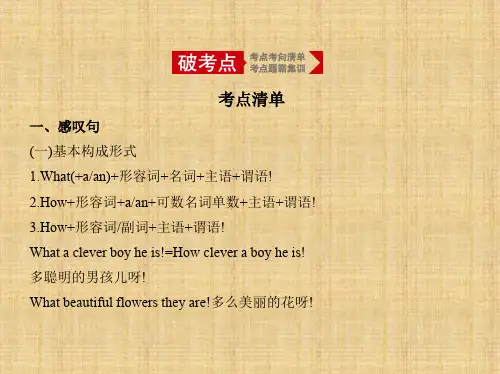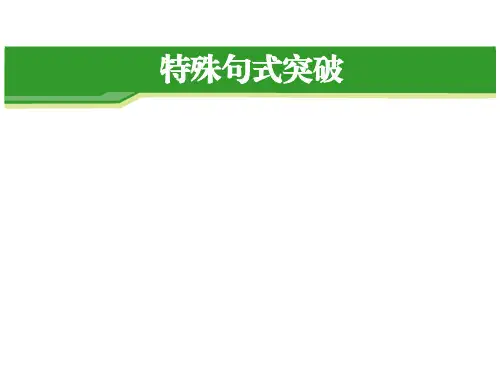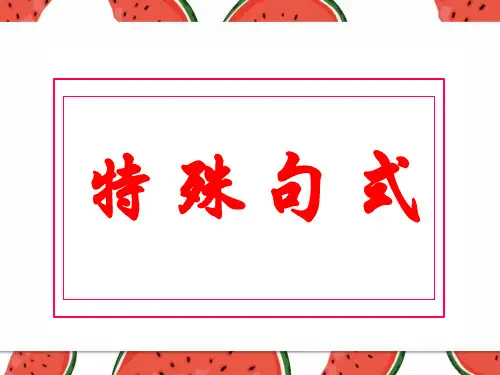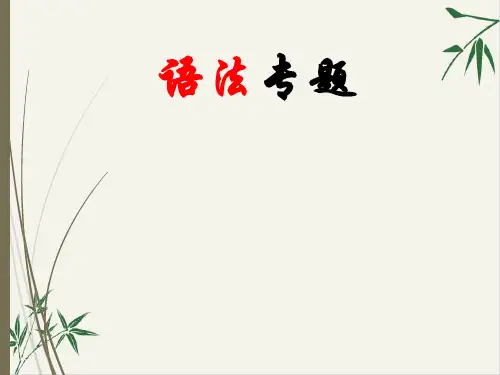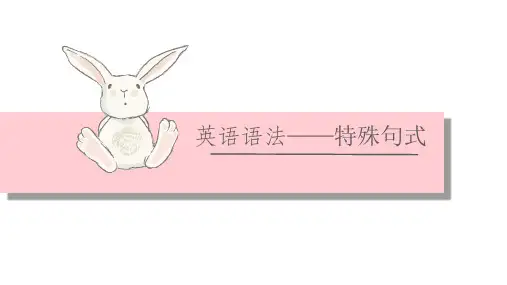Neither you nor I am right, are we? 你和我都不对,是吗?
8.当陈述部分是由并列连词and、but、or、for、so等连接的两个并列 分句组成时,反意疑问部分一般与最接近的分句保持一致,也就是说,对 后一分句进行反问。 He was a lazy child, and he didn������ t pass the exam, did he? 他是一个懒惰 的孩子。他没能通过考试,是吗? 9.当陈述部分是“there be+主语+其他”结构时,反意疑问部分要用“be +there”结构。 There are some apples in the box, aren������ t there? 盒子里有些苹果,是吗? 10.当陈述部分的谓语部分含有have时,有三种情况。 (1)have作“有”解时,反意疑问部分可用have或do的相应形式。 His brother has a new bike, hasn������ t/doesn������ t he? 他弟弟有一辆新自行车, 是吗?
考点清单
一、感叹句 (一)基本构成形式 1.What(+a/an)+形容词+名词+主语+谓语! 2.How+形容词+a/an+可数名词单数+主语+谓语! 3.How+形容词/副词+主语+谓语! What a clever boy he is!=How clever a boy he is! 多聪明的男孩儿呀! What beautiful flowers they are!多么美丽的花呀!
None of the girls are university students, are they?这些女生中没有一个是 大学生,是不是? 6.如果陈述部分的主语是不定式、动名词、主语从句,反意疑问部分的 主语用it。 Seeing is believing, isn������ t it? 眼见为实,是不是? Whether we will go there or not is up to him, isn������ t it? 我们是否去那里由 他决定,是不是? 7.当陈述部分是由neither...nor、either...or 连接的并列成分作主语时,反 意疑问部分要根据其实际意m-、in-、dis-等表否定意义的前缀构成的 单词时,陈述部分要视为肯定,反意疑问部分用否定形式。 Your father is unhappy, isn������ t he? 你父亲不高兴,是不是? It is impossible to succeed without working hard, isn������ t it? 不努力就不可能成功,是不是? 13.当陈述部分有情态动词ought to时,反意疑问部分要用ought/should。 Such things ought not to be allowed, ought/should they? 这种事是不应该被允许的,是吗? 14.陈述部分用“had better+动词原形”表示建议时,反意疑问部分用 “hadn������ t+主语”。 You������ d better tell him about the matter, hadn������ t you? 你最好告诉他那件事,行 吗?
